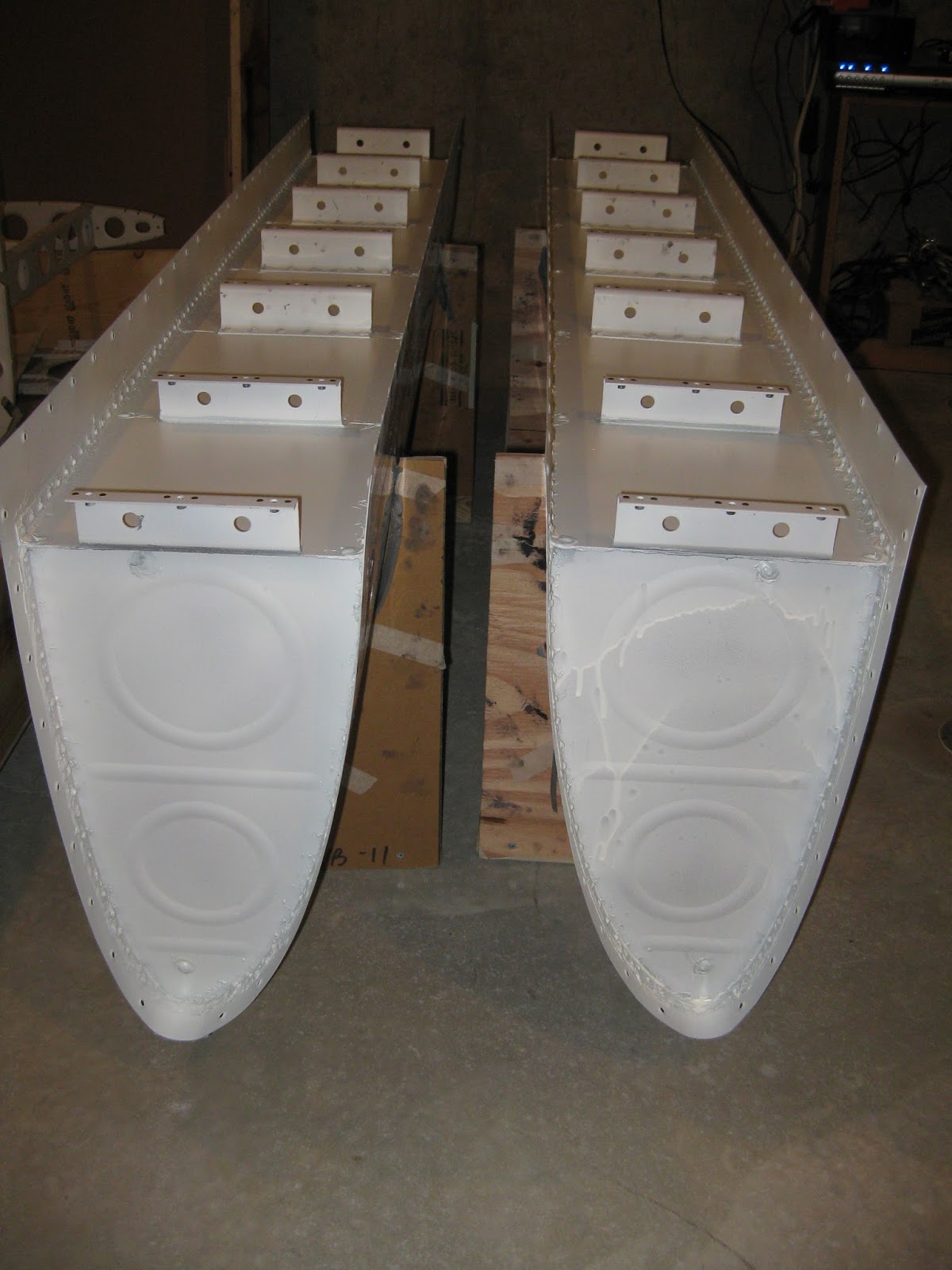Because I'm redoing my fuel tanks, I'm really only posting progress reports rather than additional details.
See here for why I'm redoing my tanks. Technique details on the original fuel tanks are found in
their associated posts.
I solo riveted the left and right tank ribs without too much fuss. My arms are barely long enough to reach the nose rivets, as the bruises on my upper arm will attest to. On the left tank, I foolishly riveted in the aft inboard rib assembly
before putting in the J-stiffener. That was fun
drilling out the associated rivets and cleaning up the sealant mess. However, in doing so, I came up with a new technique for removing rivets (new to me anyway).
See the bottom*.
Right tank in progress.
Left tank in progress.
After riveting was complete, I checked over the exterior and found this at the 3rd rivet aft (centered in image) on the forward inboard rib of the left tank. This is the first cracked rivet head I've yet seen in the build (I find it rather coincidental that there is a very minor gouge in the skin at the same point). Makes me wonder if there was some detritus on the squeezer die that got mashed into the head causing the split. It's clear from the image that the adjacent rivets share many of the same marks in the skin from the squeezer. Also, a piece of aluminum was squashed into the skin above the center rivet.
When I removed this rivet, I was surprised to see that it was
under-squeezed. I got concerned and looked at the shop heads of the
other squeezed rivets and they seemed just fine. The fact that this
rivet alone was under-squeezed seems to be further evidence that my
squeezer die had material stuck to it when this rivet was squeezed.
*To remove AD3s, I typically use
my
punch to make a nice dimple in the rivet. Then I use a #52 to
start a small hole, then a #42 to drill down the depth of the head.
Then I use my pin punch to snap the head off. However, now I drill the #52 hole down quite deep,
beyond the head and a ways into the shaft. Then, with the #42 in the drill, I go very slowly into the #52 hole and in about 2 turns the head usually snaps
right off when the bit's tip starts biting into the head. Now, for the times when
the head doesn't snap off, I drill the #42 down through the head as usual, then
use the tail of a #40 to snap it off. Because the #40 is a slightly
larger bit, it fits very snug in the hole.
















































